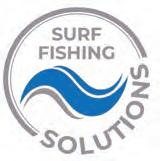
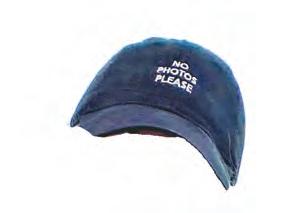


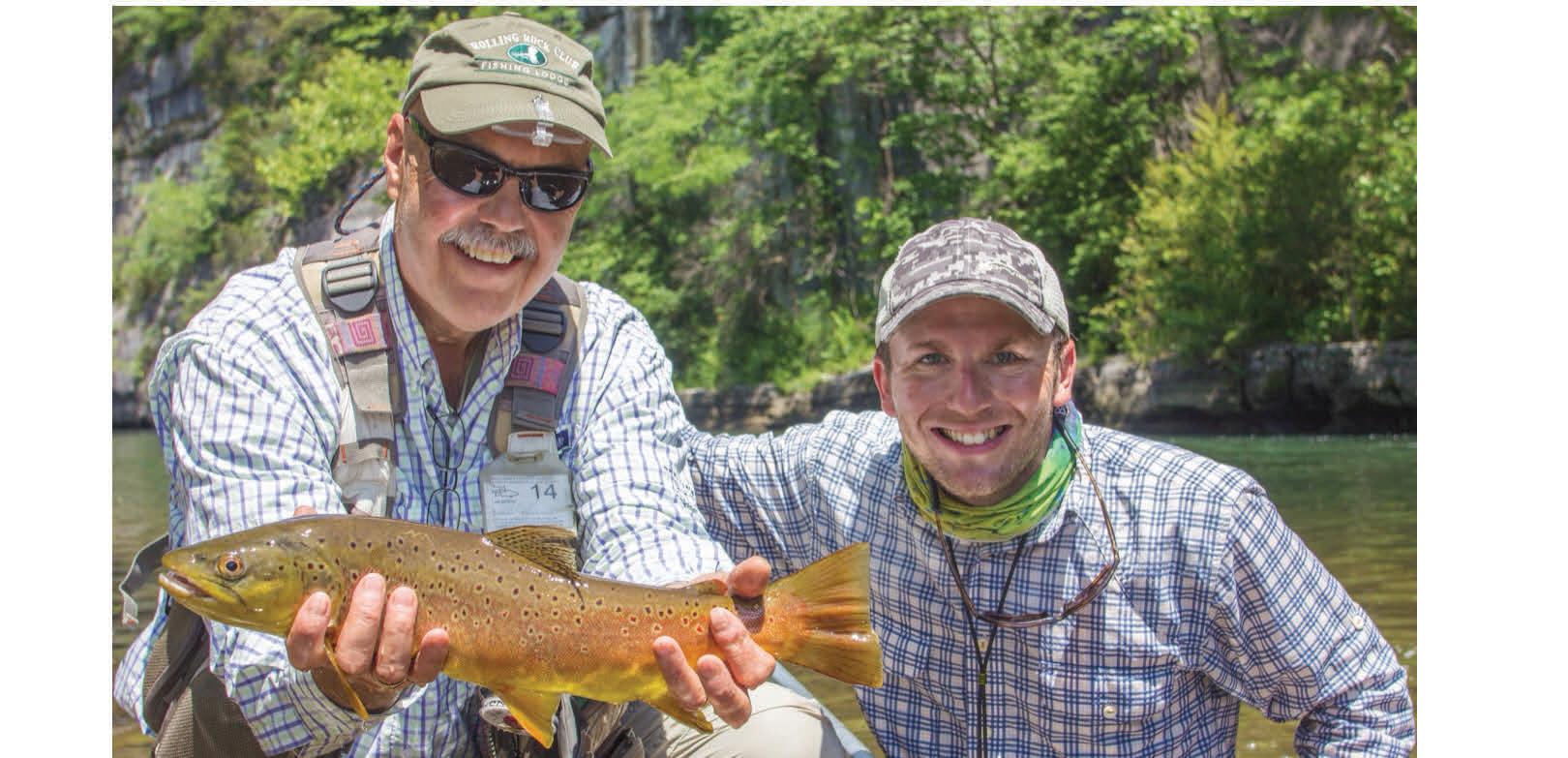














Are you ready to embark on your next on-water adventure? Before you set sail, here are ve things to know about boat insurance.
1. Boat insurance isn’t just for accidents
With comprehensive coverage, you’ll also be protected nancially for theft, vandalism, and unexpected events like storms if you need repairs or replacements due to damage.
2. Accidents can happen to anyone
When accidents happen, boat insurance offers liability coverage for damages or injuries you cause while boating, up to speci ed limits. It can also cover lawsuit costs if you’re sued.
3. Boat insurance can cover medical payments
Boat insurance offers a range of optional medical payments coverage limits, helping to cover medical expenses if you’re in an accident or someone is hurt on your boat, regardless of fault.
4. Most lenders require boat insurance
If you nanced your boat, you’ll likely need boat insurance since most lenders require boat insurance to protect their investment. Additionally, some marinas or municipalities require proof of insurance for docking.
5. Progressive offers specialized boat coverages Ever worry about getting stuck on the water? Progressive’s Sign & Glide® On-Water Towing coverage** can help. It’s an additional coverage that steps in if your boat is disabled or breaks down on the water, paying for on-water towing, jump starts, soft ungroundings, and fuel delivery. Fuel cost isn’t included.
Don’t let unforeseen circumstances disrupt your voyage. Cruise with con dence thanks to Progressive Boat insurance. Because when it comes to your boat, peace of mind is the ultimate luxury.
Scan to get a quote in as little as 4 minutes.
to learn more.





























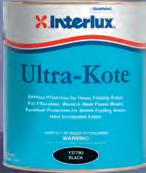
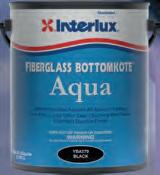




Interlux® fouling control products not only improve your performance by protecting your hull from fouling, they also protect against the spread of invasive species, safeguarding your local waters when exploring new regions, therefore helping you make a difference by looking after the waters that have provided you with enjoyment and freedom for so many years.
Like you, we have a passion for boating. We provide boaters the hull protection they deserve with over 140 years of cutting‑edge science, technology and expertise. You can expect only the best from every Interlux® yacht paint product, providing you the confidence to explore your world.
Relentless performance for every yacht, everywhere, every time. interlux.com





Capt. Mike Smith
Have you ever tried to use big dead baits to catch huge redfish? If you haven’t, then you should.

Many of the larger predatory fish prefer eating fresh, dead baits over live baits so they can save energy.
The odds of becoming an over slot redfish are at least a million to one. An overslot redfish has figured out not only how to avoid predators and how to conserve energy when finding food. That is why dead baits work so well for catching older, wiser and larger redfish.
The best dead baits for redfish are: a large blue crab cut in half, a butterflied large pinfish with its tail cut off, a chunk of ladyfish, and a chunk of bluefish. The key to catching redfish instead of catfish when dead bait fishing is by using enormous dead baits. You want to use baits at least eight inches long. Catfish always seem to find the bait first and most catfish can’t eat an eight inch dead bait.
Quite often you will catch your monster redfish and notice catfish slime on your line. This tells you that a catfish found your bait first but was unable to swallow it. If you are catching catfish with your dead baits, then you have to go bigger.
Pro Tip: Make sure to use at least a 5/0 circle hook and just enough weight to keep the bait stationary on the bottom. If you let the tide drag the bait across the bottom the redfish will have trouble finding it. But if you use too much weight the fish will often feel it and let go of the bait before getting hooked.
Circle hooks are much less likely to get swallowed and mortally wounding the fish, unlike a J hook. A J hook will often get swallowed if you are not constantly paying attention to your line.
When using dead baits for redfish keep the rod in a rod holder. Rod holders are much better at hooking redfish with circle hooks than we are.

Keith caught this monster redfish with an 8-inch chunk of bluefish along a drop off in Florida’s Indian River Lagoon.
When the redfish picks up the bait and swims off with it, the hook will lodge right in the corner of the fish’s mouth.
The best tackle for catching enormous redfish with dead baits is a medium heavy seven-foot-six-inch rod coupled with at least a 5000 series reel. Spool your reel with 30-pound braided line and make sure to have at least a 30-pound leader attached to the hook.
You can certainly catch a 40-inch redfish with a smaller rod and reel combo but the fish will be half dead by the time you get it landed. In that weakened state the fish will sometimes fall prey to a nearby dolphin or shark. There is no sense killing a big breeder redfish that you cannot harvest anyway.
Capt. Mike Smith, owner of Fish Your Ass Off Charters, is an inshore fishing guide who has been fishing the inshore waters, oyster bars and grass flats of Florida for more than 40 years. Reach him at (561) 339-2317, email: contact@fishyourassoff.com or visit fishyourassoff.com.



BY NPFL PROFESSIONAL ANGLER JOEY BLOOM
The first cool mornings of fall always bring a little excitement for me. When I back the boat down the ramp and see mist rising off the water, I know the season is changing and the bass are about to do the same. Down here in the Southeast, the fall transition is one of the most unpredictable—but also one of the most rewarding— times of the year.
The key is bait. As soon as water temps slide from the 90s into the mid-70s, shad begin their migration out of the main lake and into the creeks or shallow shorelines. They’re chasing plankton, and the bass are never far behind. If you can find the bait, you’ll find the fish. I don’t even bother making a cast until I see shad flickering on the surface or lighting up my electronics.










My mornings usually start with topwater or a shad-colored swim jig. A walking bait is one of my favorites to throw across the mouth of a pocket, and it can trigger some of the most violent strikes of the season. I’ll never forget a morning last October when a seven-pounder came out of two feet of water and nearly ripped the rod out of my hand. That’s fall bass fishing— when they decide to eat, they don’t play around.
As the sun gets higher, I shift gears. Shallow wood, laydowns, docks and grass edges become prime ambush points, and that’s when I reach for a squarebill crankbait. I like squarebills because they’ve got just the right wobble and durability to grind through cover. The trick is to make contact—bump that crankbait off a stump, dock, or tick it through grass. Those deflections are what trigger bites. Covering water quickly is important because bass are constantly on the move, shadowing those bait schools.
But not every fish in the lake makes the same move at the same time. Some of the bigger, older bass stay out deeper longer. For those, I keep a Carolina rig handy, and I’ve had great success pairing it with Bait Cave Customs hand-poured soft plastics. That slow drag across a secondary point can tempt those stubborn deep fish that won’t chase a moving bait.
Weather plays a huge role, too. A cold front will slow everything down, and that’s when I switch to finesse—something like a Bait Cave Customs, Cave Club finesse worm on a shaky head, worked methodically. On the flip side, a cloudy, stable day can set off a feeding frenzy, and that’s the time to throw reaction baits and keep covering water. Fall fishing here is a constant adjustment game, and you have to be willing to change with the conditions.
At the end of the day, the fall transition is like putting a puzzle together. The pieces change daily—sometimes hourly—but once you figure out where the bait is, how the bass are relating, and what they’ll react to, the action can be phenomenal. It’s the season where I cover the most water, throw the widest variety of baits, and stay the most flexible.
For me, that’s what makes fall in the Southeast so special. It’s unpredictable, challenging, and full of opportunity. And when everything lines up, it’s some of the best bass fishing of the entire year. With the right mindset—and the right tackle—you can make this season one to remember. Follow all of Joey Bloom’s fishing and fun on Instagram, Facebook, and YouTube at Joey Bloom Fishing.









SOUTH SHORE HARBOUR MARINA
2400 South Shore Harbour Blvd, League City, TX 77573

LAKE LEWISVILLE
1481 E Hill Park Rd, Lewisville, TX 75056
GRANDPAPPY POINT
1789 Harbor Dr, Denison, TX 75020
NORTH POINT MARINA
3681 Cedar Ridge Park Rd, Temple, TX 76502
WALDEN MARINA
12050 Melville Dr Suite 6, Montgomery, TX 77356
WATERPOINT MARINA
15320 TX-105 Suite 500, Montgomery, TX 77356

ROUGH HOLLOW IN LAKEWAY 105 Yacht Club Cove, Lakeway, TX 78734
SANDY CREEK MARINA
8714 Lime Creek Rd, Leander, TX 78641
1705 S Quinlan Park Rd, Austin, TX 78732
MARKER 37 MARINA
13317 S Padre Island Dr, Corpus Christi, TX 78418
PELICAN REST MARINA
7819 Broadway St, Galveston, TX 77554
COVE HARBOR YACHT CLUB 121 Cove Harbor Rockport, TX 78382




















BY CAPT. MICHAEL OKRUHLIK MyCoastOutdoors@yahoo.com www.MyCoastOutdoors.com
October might just be the perfect month to be on the water. The blazing heat of summer has faded, boat traffic thins, and the marsh comes alive with shrimp, finfish, and the “big three” — trout, redfish, and flounder — all fattening up for the season. For anglers, that means opportunity.
This time of year, I like to keep things simple but intentional. Soft plastics in the 3.25-inch range are my bread and butter. I lean toward paddle tails because I can cover water quickly and the vibration draws strikes from aggressive fall fish. Durability matters too, because when the action gets fast, the last thing you want is to burn time swapping out torn lures. Rigging depends on cover and depth — sometimes weedless, sometimes a jig head — but either way, adapt to the structure in front of you. Outgoing tides are my favorite. They concentrate bait and predators alike into smaller, target-rich areas. Look for drains, bayou mouths, bends, and reef cuts. Even island points can funnel current and stack fish. Once you’ve found the spots, presentation is everything. Reds often respond to a steady retrieve, trout like a twitch-twitch pause, and flounder react best to a lure darting along the bottom, stirring up a little commotion. Of course, no fish reads the manual — sometimes the “wrong” retrieve produces the right bite.
Which brings me to one of the best lessons I’ve learned: sometimes you’ve got to break your own rules. On a recent quarter-moon tide, I worked a shallow grass flat with two rods rigged identically except for lure color. One was white with a limetreuse tail, the other pumpkinseed with green glitter. Early on, the reds were all over the pumpkinseed, inhaling it on a fast, steady retrieve just under the surface. But when I noticed trout feeding nearby, I switched things up. Instead of swimming the bait, I bounced it hard off the bottom, fast twitches with short pauses. Suddenly, the trout lit up, and they showed a clear preference for the white limetreuse.
That day drove home an important point: don’t get stuck on what’s working. Change the speed, change the color, change the action — sometimes even when the bite is good, it can get better. Covering the same water with different retrieves or presentations lets you unlock what different species want, even when they’re feeding in the same spot.
So, as October cools the air and the marsh fills with life, keep your tackle simple but your approach flexible. Target those pinch points on a falling tide, let the fish tell you what retrieve they want, and don’t be afraid to experiment. The fish are hungry, the weather is kinder, and it’s the perfect time to grab a kid, a paddle tail, and make some memories.



5
6





3 Fri 6:31 1.2 2:46 1.1 1:01P 1.1 11:45 0.3 7:12 7:03
4 Sat 6:33 1.2 4:38 1.2 12:28 1.0 7:13 7:02
7 Tue 6:46 1.1 8:36 1.4 2:10 0.7 2:04 0.3 7:14 6:58
8 Wed 6:49 1.1 9:51 1.4 3:02 0.9 2:48 0.1 7:15 6:57
9 Thu 6:48 1.2 11:08 1.5 3:58 1.1 3:36 0.0 7:16 6:56
10 Fri 6:33 1.3 5:02 1.3 4:29 -0.1 7:16 6:55
11 Sat 12:31 1.5 5:28 -0.1 7:17 6:54
12 Sun 2:08 1.5 6:37 0.0 7:17 6:53
13 Mon 3:55 1.4 7:57 0.1 7:18 6:52
14 Tue 5:06 1.4 9:22 0.2 7:19 6:51
15 Wed 5:39 1.3 10:39 0.3 7:19 6:49
16 Thu 5:56 1.3 3:06 1.1 12:47P 1.0 11:43 0.4 7:20 6:48
17 Fri 6:05 1.2 4:42 1.1 12:59 0.9 7:20 6:47
18 Sat 6:10 1.1 6:00 1.1 12:36 0.5 1:17 0.7 7:21 6:46
19 Sun 6:14 1.1 7:07 1.2 1:20 0.7 1:35 0.6 7:22 6:45
20 Mon 6:16 1.1 8:05 1.2 1:58 0.8 1:54 0.4 7:22 6:44
22 Wed 6:15 1.1 9:46 1.3 3:03 1.0 2:38 0.2 7:24 6:42
23 Thu 6:05 1.1 10:35 1.3 3:33 1.1 3:06 0.2 7:24 6:41
24 Fri 5:42 1.2 11:28 1.3 4:01
26
27
29


7
6









































0.0 7:17 6:54
12 Sun 4:55 1.8 5:56 0.1 7:18 6:53
13 Mon 6:03 1.8 7:13 0.2 7:19 6:52
14 Tue 6:51 1.7 8:31 0.3 7:19 6:51
15 Wed 7:22 1.6 9:41 0.4 7:20 6:50
16 Thu 7:40 1.5 10:40 0.5 7:20 6:49
17 Fri 7:46 1.4 11:30 0.7 7:21 6:48
18 Sat 7:31 1.2 6:50 1.1 1:10 0.9 7:22 6:47
19 Sun 6:29 1.2 9:03 1.2 12:15 0.9 1:05 0.7 7:22









































































































907 9th Street | San Leon, TX 77539
& OPERATED 907 9th Street | San Leon, TX 77539
- 549 - 4133
MONDAY - SATURDAY 10AM - 9PM Liquorhub907@gmail.com
MONDAY - SATURDAY | 10AM - 9PM Liquorhub907@gmail.com














CAPT. DAVID C DILLMAN
832-228-8012
galvestonbaycharterfishing.com
It seems like I just finish one article and another one is due. Sometimes I wonder what the return is in all this writing. God gives you a path, you just have to have faith and follow where it leads. That's basically how I became the writer here in Coastal Angler Magazine and of the Reel Report in the Galveston County Daily Newspaper.
Summer is basically over, and school is in session. Here is a recap of the Summer's fishing out of Eagle Point Fishing Camp located in the middle of Galveston bay.
By the end of May, conditions were right for fishing to be exceptional around Eagle Point and the adjacent waters. We had just the right amount of rainfall for optimal salinity level, and the trout were moving in from the gulf. June arrived and guess what? Heavy rains caused flooding in parts of Houston, and above the watershed that feeds into Galveston bay. Another year of freshwater runoff, turning our part of the bay system off colored.
The first two weeks of June catching fish was tough, but luckily, I found an area that held a few fish over deep shell and diving seagulls. The last two weeks of the month, the shorelines around
Eagle Point began to clear just enough, and to my surprise held some really good trout. It also held the boats becoming a little crowded at times.
The incoming tides around July 4th, brought in saltier water. I then began following the tides to the open waters of Galveston bay along the ship channel. I found some fish and had them to myself for a week. We were catching a mix of trout and black drum with the better bite coming off soft plastics for the trout...
Middle of July, August, and September, the fish fell into their regular Summer pattern. First, I was keying in on rock groins, that are adjacent to the ship channel. We were working this area, throwing live shrimp underneath popping. Catching a mixed bag of speckled trout, black drum, sheepshead, and the occasional slot red. By the first week of August, the A-lease gas wells began to produce a few fish. Towards the third week of the month, better catches were coming from live shrimp underneath popping corks.
Now we're into October and if the upper coast is sparred from any complications from a tropical system, we should see a normal pattern for the month. On a normal year, the fish are moving to the far northern reaches of the bay. This is where the bait fish are shrimp are, their main diet. They are there waiting on the first cold/cool fronts that drop the tide levels and that will push the bait out of the estuaries. I'll be fishing the northern upper


end of the bay, but I will not rule out the shorelines along Eagle Point, the gas wells, nor the spoil islands. My decision of where to fish will depend upon the cool/cold fronts that come down from the north.
I pray we can get through October without a tropical storm, yet worse a hurricane. God is in control of all things. He has calmed the seas, healed the blind, and turned water into wine. I believe in the power of prayer. Instead of worrying let’s all come together in prayer. and pray that God destroys any other storms that enter the gulf.

What’s made Eagle Point Fishing Camp unique since 1929 is its location and business model. Because it’s in the center of the Galveston Bay, EPFC allows anglers to conveniently fish a vast stretch of water spanning from Houston to Galveston. Using the same full-service concept as its date of establishment, EPFC has proven for nearly a century that easy access to the water combined with a skilled staff creates the perfect fishing experience. Along with the boat ramp, boat storage, live bait for purchase, tackle shop, and RV park, EPFC has always had a fleet of shrimp boats to supply the bait that so many of their regular customers desire. Their successful commercial shrimping business has been an intricate part of what makes EPFC unique.



























Bow hunting and Dove seasons are upon us anglers. Keep in mind, not to forget some of Galveston Bays finest fishing is also in full swing.
With the passing of each cold front, it has given us relief from the heat of the summer months as well as giving us greater opportunities for fishing Trinity Bay.
The cooler temperatures have already had an effect on Galveston Bay, especially Trinity Bay. In the later days of summer when the water temperature hovers around 90 degrees and there is no relief in sight; fishing for speckled trout or redfish is at best difficult. The fish are usually scattered and are very difficult to locate; sometimes the best time is to fish at night under some sort of lights.
So, with the recent weather forecast calling for the first few cold fronts in ’2025, local fishermen look forward to these weather changes with great anticipation of the fall season. The fish start moving, some flounder will make their annual migration, and the golden croaker run is next followed closely by the speckled trout and redfish. These fronts tell the fish to start storing up food for the upcoming cold months ahead. This is also the time of year when the birds start working over the migration of shrimp out of the bay system. Some would say that perhaps this is their most favorite time of year. This time of year, the cooler
temperatures make it very comfortable fishing and there seems to be less pressure on the bay because of the hunting seasons. Fishing pressure affects Trinity Bay as much as the weather sometimes. Best bet now is to key on watching for diving birds (seagulls and terns) hovering over nervous shrimp skipping across the water.
This can be some of the best fishing and most rewarding for your ice chests. Remember, limits have changed to 3 speckled trout and 3 redfish. Both species have a tag attached for 1 speckled trout over 25” s and 1 redfish, 28” as well………………….
Best bet to use for success while working the birds is a bass assassin or shad body, with a quarter ounce lead head. Sometimes, you may want to use a heavier head to get the bait past the smaller trout near the surface. Larger trout to three pounds are almost always feeding near the bottom of the area in question. Excellent bait is a gold spoon. Because it weighs more and the spoon is larger, the distance to the frenzy birds can be reduced with a longer cast and drops quickly to those larger trout. This writer often wonders when the fish are in a feeding frenzy like that if it really matters what you throw, “but if it is not broke, don’t fix it!” As I said earlier, the fishing pressure has as much effect on Trinity Bay as the temperature. During the week, you can see the difference. Birds will be working the whole bay, but as soon as the weekend comes, the

activity shuts down quite a bit. When you spot a flock of birds, especially in the back of Trinity Bay, a trolling motor can be a big advantage. If you go plowing in there fast with your big engines, the fish will scatter and very little will be caught. Use common sense and stay approximately one hundred feet upwind of the diving birds and drift in with the aid of your trolling motor. I know sometimes this can be frustrating because you know the fish are there and you want to get there quickly, but I promise, if you motor right in on top of the birds, the fish will scatter. Remember that if there are boats already working the birds, they do have first right, so be courteous of those fishing and start looking for other birds and they should return the favor. Look for smaller number of birds (less than five) working as sometimes larger trout can be found under those birds as opposed to thirty to forty birds working a larger school of trout where the fish are smaller.
I hope to see y’all on Trinity Bay and remember to be courteous to the other anglers when fishing the birds.
Good luck and good fishing.




October has traditionally been one of my favorite months of the year for a number of species, but especially for grouper. I’ve always said that Christmas week is the apex of grouper fishing…and it is. I’ve also said that there is a mental hierarchy in grouper, with gags being at the top and reds being at the bottom. I could catch a red grouper on a wooden dowel rod with menhaden oil on it and a hook attached…and that is not an exaggeration.
I hate to be repetitive, but a live pinfish on a Squid Decoy Jig is a dead ringer for red grouper (and all grouper for that matter). If you have the ability to keep a pinfish trap in the water, I would strongly suggest securing several dozen pinfish to take bottom fishing. Everything out there eats them, not to mention they are very hardy and will live all day in the livewell. Red grouper, gags and scamps all view pinfish the same as sailor’s choice and other small snappers as egg eaters. If for no other reason, they will eat them just to kill them, so they don’t eat their eggs. Frozen cigar minnows and sardines have caught more grouper (historically) than all the other baits combined. That’s what they eat!
Tim Barefoot
ice, fuel or weather.

We always had hundreds of pounds of (frozen) cigs and sardines, so let’s not get too carried away with the bait selection. Frozen cigs get the job done, but now that I’m fishing the super stealth decoy
10 seconds. Nothing down there can resist it. Period.
As I always say, “Find the bait, find the fish.” Yes, I like to fish structure like ledges, wrecks or live bottom, but the main ingredient is food. If you mark big stacks of cigar minnows, sardines, beeliners, etc., it’s always a good idea to fish below that, and keep the light line out on the surface or near the surface for all the pelagics. We have vast areas of sand bottom with no structure whatsoever. We just fished big stacks of bait and caught them GOOD! Red grouper can be caught in most depths of water. From as shallow as 15 feet on the Atlantic side to 400 feet and beyond. The only problem with fishing this style of jig and minnow combination is that you are definitely gonna catch gags, scamps, blacks— and those “endangered” American red snapper.

jig/bait combination, I do love a live pinfish or other live baits.
Please take a descending device and familiarize yourself with how to use it.
I guess that’s why I’m writing this article featuring red grouper this month; because that’s about all we have to fish for this time of year. So get out there with some pinfish and frozen minnows and harvest the red grouper and scamps.
On a commercial fishing trip (many years ago), if you ran out of any one of these four things, it would send you back to the Hill: bait,
With that all being said, don’t ever pass up the opportunity to jig up live cigs and sardines for the ULTIMATE combo! The life expectancy of a live cig or sardine on a Decoy Jig is under
Take your kids fishing, too, and make plenty of videos and photos that’ll last a lifetime.
Learn more from Tim Barefoot on his YouTube channel and at barefootcatsandtackle.com.

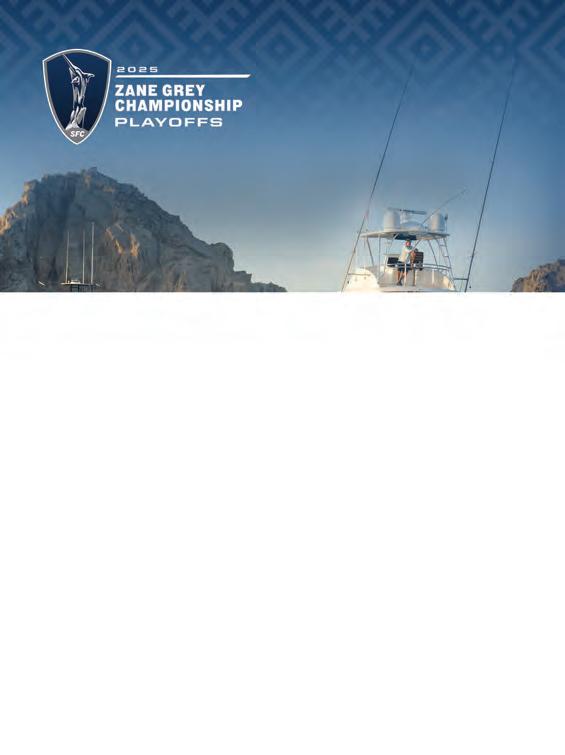






By Astrid deGruchy
When it comes to snapper fishing, the Florida Keys are hard to beat. From shallow mangroves to deep wrecks, these waters hold everything from tasty keepers to tackle-busting giants, and the right gear makes all the difference.
shrimp, pilchards, or cut ballyhoo for consistent action. Downsizing leader in clear water is key. On the reef edge, Yellowtail snapper are Keys gold. Target them from spring through fall using a PENN Slammer IV 4500 with 15 lb mono. Set a steady chum slick and free-line white baits like pilchards on a Mustad 1/0 J-hook. Keep your presentation natural since yellowtails spook easily.
For heavier hitters, Mutton snapper shine during the late spring and early summer full moons. Use a PENN Authority 5500 matched with 30 lb mono leaders and Mustad 3/0 to 4/0 circle hooks (Big Guns are the best). Drift live pinfish or pilchards back naturally, and be ready, when a mutton eats, it’s all power. For something more regal, head deep for queen snapper, the true royalty of the snapper world. These stunning red fish haunt 500-1,000 feet down along the continental shelf. A PENN Fathom II paired with 40 lb braid and a Mustad 6/0 circle hook tipped with squid or bonita chunks gets it done. Most anglers opt for electric reels, but handcranking one up is a badge of honor.

Mangrove snappers are the everyday staple, found year-round around bridges, mangroves, and patch reefs. Light tackle with a PENN Spinfisher VI or Battle III 3500 with 20-25 lb mono gets the job done. Use live


Then there’s the ultimate test: the Cubera snapper. Capt. Kody (@capt_kody) recently put me on a 65-pound Cubera out of Key West. These brutes demand muscle, like PENN International 50VISX, 80-100 lb mono + Mustad 12/0 circle hook type muscle. Summer full moons are prime, and whole lobsters are the bait of choice (yes, not cheap). Once you’re hooked up, it’s a brutal test of endurance, arguably the hardest fight you’ll experience on stand-up gear, especially when you’re handcranking every inch.
Out here, every snapper tells a story… from the quick hits of mangroves to the heartpounding brawls with cubera beasts. We live for those moments, and now you can too. Follow the journey on Bean Sportfishing TV on YouTube. If you are interested in a Cubera Trip, reach out to Capt. Kody Michael on Instagram (@capt_kody) or go to reel-guides.com






It’s no fish tale when you run with a John Deere. You can get everything done faster and easier, so you get more time on the water. Plus, our special offers make them the catch of the day.



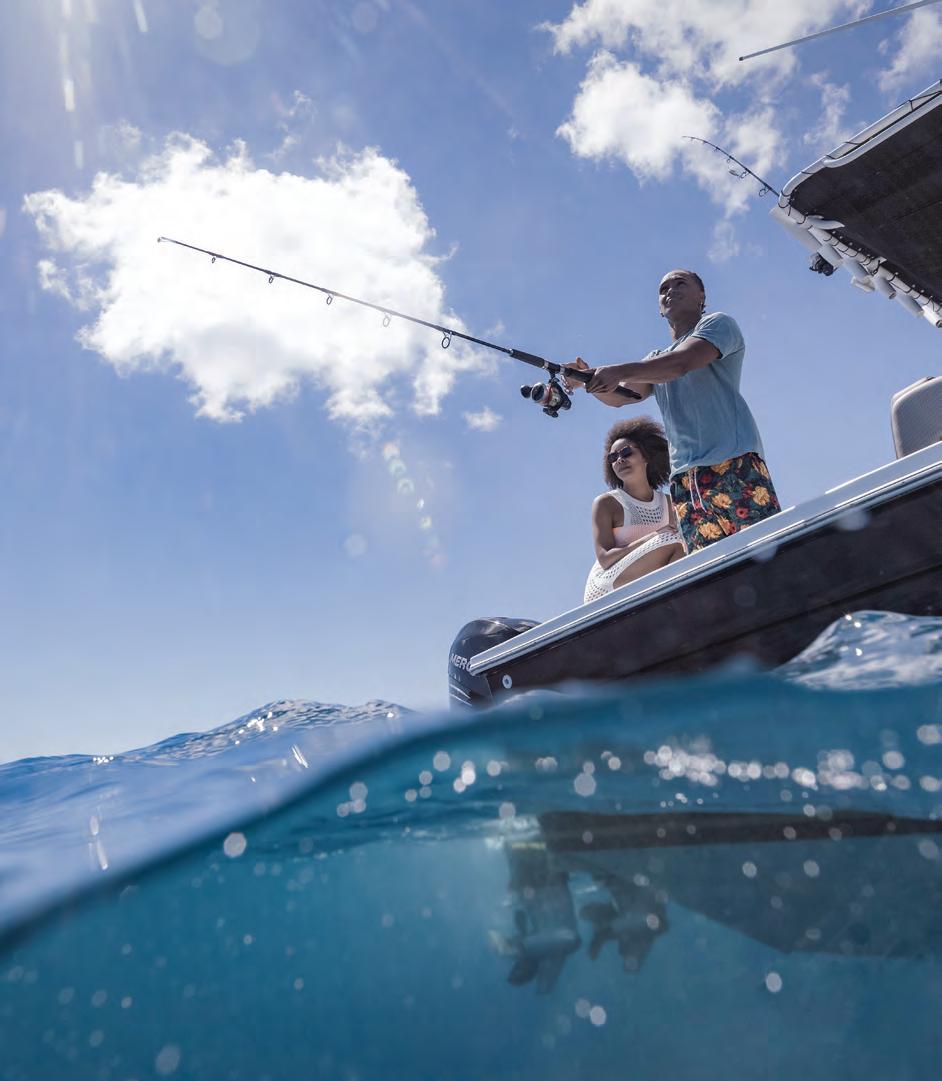
Nestled in the heart of the Caribbean, the US Virgin Islands embody a harmonious blend of natural beauty, cultural vibrancy, and laid-back serenity. These islands are more than just a picturesque getaway; they are a living testament to nature’s rhythm and resilience, effortlessly in tune with the world around them.
With no passport required for U.S. citizens, from the moment you arrive, the islands’ natural rhythm is palpable. The gentle sway of palm trees, the soothing sound of surf crashing against sandy shores, and the vibrant melodies of local music all echo the heartbeat of this tropical paradise. The islands’ lush landscapes, with their verdant hills and crystal-clear waters, mirror the steady pulse of life that sustains the local ecosystems and communities alike.
The US Virgin Islands’ environment is a symphony of biodiversity with world class fishing and diving. These natural elements are not static; they dance in harmony, influenced by the tides, wind, and seasonal changes—further emphasizing the islands’ intrinsic rhythm. This delicate balance underscores the importance of conservation efforts, ensuring that future generations continue to experience the islands’ natural cadence.
Culturally, the US Virgin Islands are equally in tune. The music, dance and festivals reflect a vibrant heritage rooted in African, European and Caribbean traditions. The spirited calypso beats
and reggae rhythms are expressions of life's ongoing dance—celebrating resilience, community and joy. These cultural expressions are an extension of the islands’ natural rhythm, showcasing how human life here moves seamlessly with nature’s flow.

In a world often dictated by chaos and rapid change, the US Virgin Islands serve as a reminder of the beauty of being in sync with nature’s tempo. Their natural, cultural and ecological rhythms offer







a blueprint for sustainable living and harmony. As travelers and residents alike continue to embrace this rhythm, they uphold a legacy of balance—one that celebrates life’s natural flow and the enduring spirit of these remarkable islands. In the US Virgin Islands, being in rhythm
way of life.







The North Carolina Wildlife Resources Commission (NCWRC) will implement Delayed Harvest Trout Waters regulations on 33 trout waters beginning Oct. 1. Under Delayed Harvest Trout Waters regulations, only catch-and-release of trout is permissible from program waters between Oct. 1 and June 5, 2026. No natural bait may be possessed, and anglers can fish only with artificial lures with one single hook. An artificial lure is defined as a fishing lure that neither contains nor has been treated with any substance that attracts fish by the sense of taste or smell. NCWRC staff stock Delayed Harvest Trout Waters from fall through spring with high densities of trout to increase anglers’ chances of catching trout. Delayed Harvest Trout Waters, posted with diamond-shaped, black-andwhite signs, are popular fishing destinations for anglers who enjoy catchand-release trout fishing. Anglers should be aware that stocking locations along streams may be different than in the past due to hurricane damage impacting the stocking truck and angler access.
For more information on trout fishing and stocking, visit ncwildlife.gov/trout and to follow the progress of the Setzer renovation, visit ncwildlife.gov/setzer.












